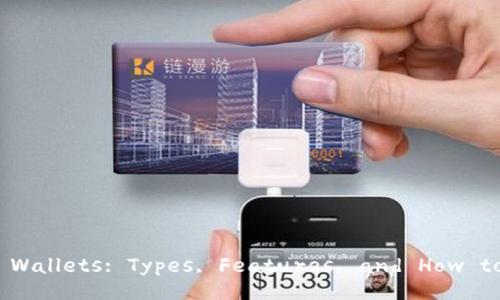In the realm of digital currency, Bitcoin stands out as a revolutionary form of money that operates on the principle of decentralization. However, owning Bitcoin is just the first step; the real question is, how do you store it securely? Here’s where Bitcoin wallets come into play. This article will guide you through the intricacies of Bitcoin wallets, their types, and how to choose the one that best fits your needs.

At its core, a Bitcoin wallet is a digital tool that allows you to store and manage your Bitcoin. But remember, you’re not actually storing Bitcoin per se, since Bitcoin exists on the blockchain. Instead, wallets hold your private and public keys, which enable you to access and conduct transactions using your Bitcoin. Don’t you want to know how these keys work? Let’s break it down!
Bitcoin wallets come in various forms, each with its own unique features and benefits. Understanding these can help you decide which type aligns best with your security needs and usability preferences.
Hardware wallets are physical devices that securely store your private keys offline. This makes them immune to online hacking attempts. They are a popular choice for those who hold significant amounts of cryptocurrency. Some well-known examples include Ledger and Trezor. Think about it: if you were to invest thousands of dollars in Bitcoin, wouldn’t you want to keep it as safe as possible?
Software wallets are applications that can be installed on your computer or smartphone. They come in two main types: desktop wallets and mobile wallets. Desktop wallets (like Electrum) offer a higher level of security as they are stored locally on your device. Mobile wallets (like Mycelium) are more convenient for everyday transactions. Which type would you prefer for daily use?
Web wallets are hosted online and allow you to access your Bitcoin from any internet-enabled device. While they offer convenience, they are deemed less secure since they can be vulnerable to hacks. Examples include Coinbase and Blockchain.info. Are you willing to trade some security for convenience?
A paper wallet is simply a physical paper printout of your Bitcoin private and public keys. While this is one of the most secure methods if handled correctly, it also comes with risks like loss or damage. Would you feel comfortable with this old-school method?

When choosing a Bitcoin wallet, several key features should guide your decision-making process. It’s essential to assess these features based on your personal needs and priorities.
Security is paramount in the world of cryptocurrency. Look for wallets that offer features like two-factor authentication, encryption, and backup options. Does the wallet you're considering provide robust security measures?
A wallet with an intuitive interface can make your cryptocurrency experience more enjoyable. Especially if you are new to Bitcoin, a complicated wallet can be frustrating. Is ease of use at the top of your wishlist?
Depending on whether you want to access your Bitcoin frequently or rarely, you’ll want to consider how easy it is to access your wallet. For instance, do you prefer having your wallet available on your mobile device or are you okay with using a desktop version?
Every now and then, you may require assistance when using your wallet. Having access to responsive customer support can make a significant difference. Have you ever found yourself in a situation where customer support was a deciding factor for a product?
Once you’ve chosen the right type of Bitcoin wallet for your needs, setting it up is fairly straightforward. Here’s a quick introductory guide based on the type of wallet you opt for.
1. Purchase your hardware wallet from a reputable source. 2. Follow the manufacturer's instructions to set it up. 3. Make sure to secure your recovery seed (typically a 12-24 word phrase). 4. Install necessary software and update firmware. Is there anything more reassuring than knowing exactly how to safeguard your investment?
1. Download the software from the official website. 2. Create a new wallet by following the prompts. 3. Write down your recovery phrase and store it securely. 4. Fund your wallet with Bitcoin. Isn’t it satisfying to see your wallet filled with digital assets?
1. Go to the service provider's website. 2. Sign up and create an account. 3. Secure your account with 2FA. 4. Transfer Bitcoin into your new wallet. Are you excited to dive into the online world of cryptocurrency?
1. Use a reputable generator tool, preferably offline. 2. Create a new wallet and print your keys. 3. Cut out your keys and store them in a safe place. Wouldn’t it be exhilarating to hold your keys in your hand?
As with any new technology, misconceptions can easily arise. Let’s address some of the most common myths about Bitcoin wallets.
While losing access to your wallet can lead to difficulties in retrieving your Bitcoin, if backed up properly using recovery phrases, you can restore access. Have you ever faced such a dilemma?
As we’ve explored, different types of wallets serve different needs. It’s vital to choose one that fits your lifestyle and security preferences. Isn't it fascinating how personalized choices can significantly impact your crypto experience?
While there may be a learning curve, most wallets are designed to be user-friendly, especially for beginners. With a little bit of patience and practice, you can master it. Wouldn't the idea of mastering something new excite you?
In summary, a Bitcoin wallet is essential for anyone looking to manage their Bitcoin securely and efficiently. By understanding the various types of wallets and what features to prioritize, you can make an informed decision that suits you best. Are you ready to take the next step in your cryptocurrency journey? The world of digital finance is evolving rapidly, and with the right tools and knowledge, you can navigate it with confidence.
As technology continues to advance, so will the features and security of Bitcoin wallets. Staying informed will play a critical role in your success as a cryptocurrency holder. Engage with your community, explore various options, and keep learning. The future of finance might be at your fingertips – are you prepared to grasp it?
leave a reply